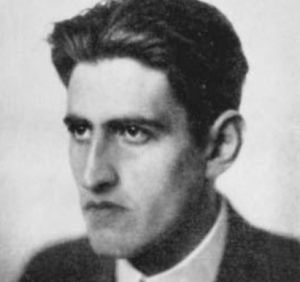Siegfried Bernfeld and Social Education

Siegfried Bernfeld was a first-generation psychoanalyst who played an important role at the time but was later unfairly relegated. His work was very interesting and his contributions are relevant to this day.
Anna Freud said that Siegfried Bernfeld was a “one-of-a-kind being”. In fact, Sigmund Freud talked about him in one of his letters: “He’s a leading expert in psychoanalysis. I consider him perhaps the most gifted of my students and disciples. He also has superior knowledge. He’s an irresistible speaker and an extremely influential teacher. All in all, I only have good things to say about him”.
Just like his peers, Siegfried Bernfeld lived during a socially and politically violent time. In the face of the persecution he endured due to the fact that he was a Jew, he focused on reflecting on social fields. He strayed from psychoanalysis and became more involved with the collective phenomena from a political point of view.
Siegfried Bernfeld’s beginnings
Like many other psychoanalysts, Siegfried Bernfeld was a Jew. He was born in Lemberg, Galicia in 1892. His parents were textile traders. Bernfeld’s passion for nature led him to study zoology and botany.
Pedagogy and psychology deeply interested him at a very young age. He found hypnosis extremely fascinating since it was quite innovative at that point in time. In fact, he practiced it with his younger brother. Additionally, he was deeply interested in Maria Montessori’s theories. Later, he studied psychoanalysis and became fascinated with the free association method.
At age 22, he married Anne Salomon, a young student and passionate follower of Marxism. She greatly influenced Bernfield’s thoughts and activities.

Social activity and psychoanalysis
Motivated by his political involvement, Siegfried Bernfeld created an institution dedicated to picking up Jewish children who were orphaned after World War I. The institution’s goal was to train them so that they could immigrate to Palestine. He protected approximately 145 children. It’s important to mention that many of them had serious traumas. Consequently, this inclined him even more towards psychoanalysis.
Soon after, he met Sigmund Freud and ended up opening an office in Vienna in 1922. By then, he had established a close friendship with Anna Freud and many considered him one of the great pioneers of the new psychoanalytic current. With Anna and other relevant psychoanalysts of the time, he created a group dedicated to assisting homeless children.
The group’s main goal was extending psychoanalytic matters to the social field. In 1925, Siegfried Bernfeld published his first two works on social education. One of them focused on adolescence and the other on German pedagogical methods.

Siegfried Bernfeld’s end
Siegfried Bernfeld got married three times and lived in several European countries when Nazism arose. He ended up moving to San Francisco, California with his third wife. Unlike other psychoanalysts, Bernfeld didn’t feel satisfied with the “psychology of self” that became popular in the United States.
Perhaps his nostalgia and great intellectual curiosity led him to become one of Freud’s most important biographers. Although people don’t consider him his “official” biographer, his articles were clearly retaken by Ernest Jones, whom Anna Freud considered her father’s authorized biographer.
In brief, Siegfried Bernfeld left interesting essays in which he talked about the principles of psychoanalysis and social education. His studies on the psychology of adolescence are remarkable. He founded the first psychoanalytic society of San Francisco. Many remember him as a compulsive tobacco consumer, a lover of beautiful women, and an honest psychoanalyst.
All cited sources were thoroughly reviewed by our team to ensure their quality, reliability, currency, and validity. The bibliography of this article was considered reliable and of academic or scientific accuracy.
- Bernfeld, S. (1944). Freud’s earliest theories and the school of Helmholtz. The Psychoanalytic Quarterly, 13(3), 341-362.
- Bernfeld, S. (1962). On psychoanalytic training. The psychoanalytic quarterly, 31(4), 453-482.
- Bernfeld, S. (2013). The psychology of the infant. Routledge.
- Bernfeld, S. (1938). Types of adolescence. The Psychoanalytic Quarterly, 7(2), 243-253.
- Bernfeld, S. (1941). The facts of observation in psychoanalysis. The Journal of Psychology, 12(2), 289-305.
This text is provided for informational purposes only and does not replace consultation with a professional. If in doubt, consult your specialist.








